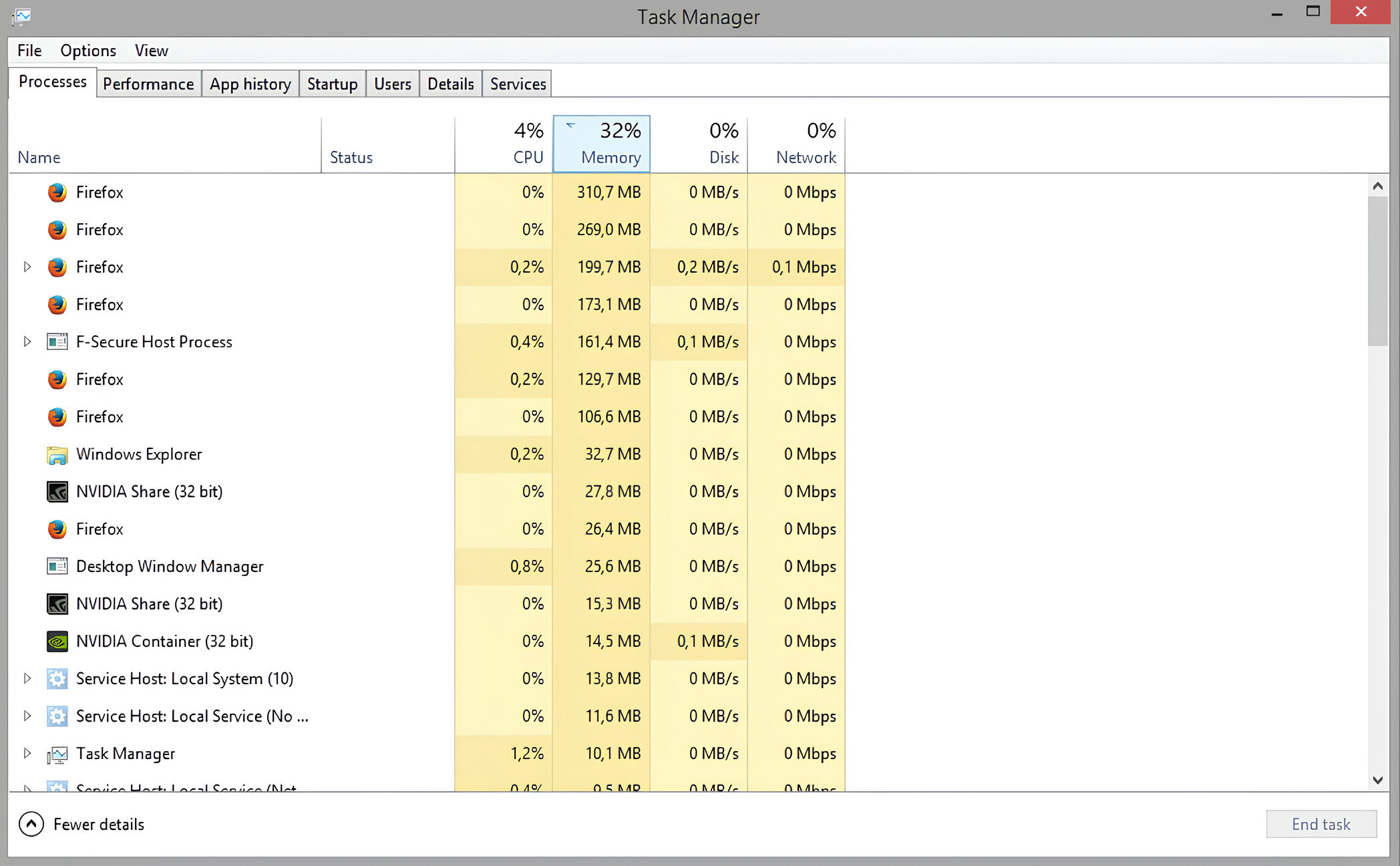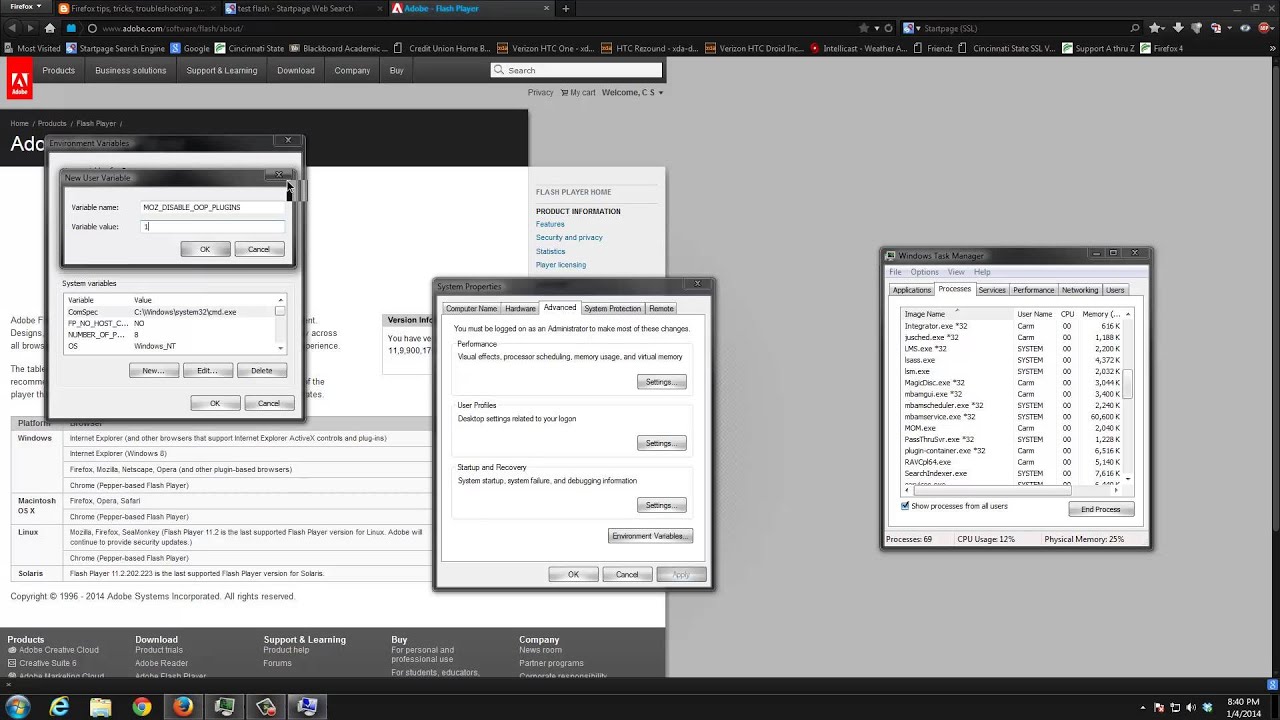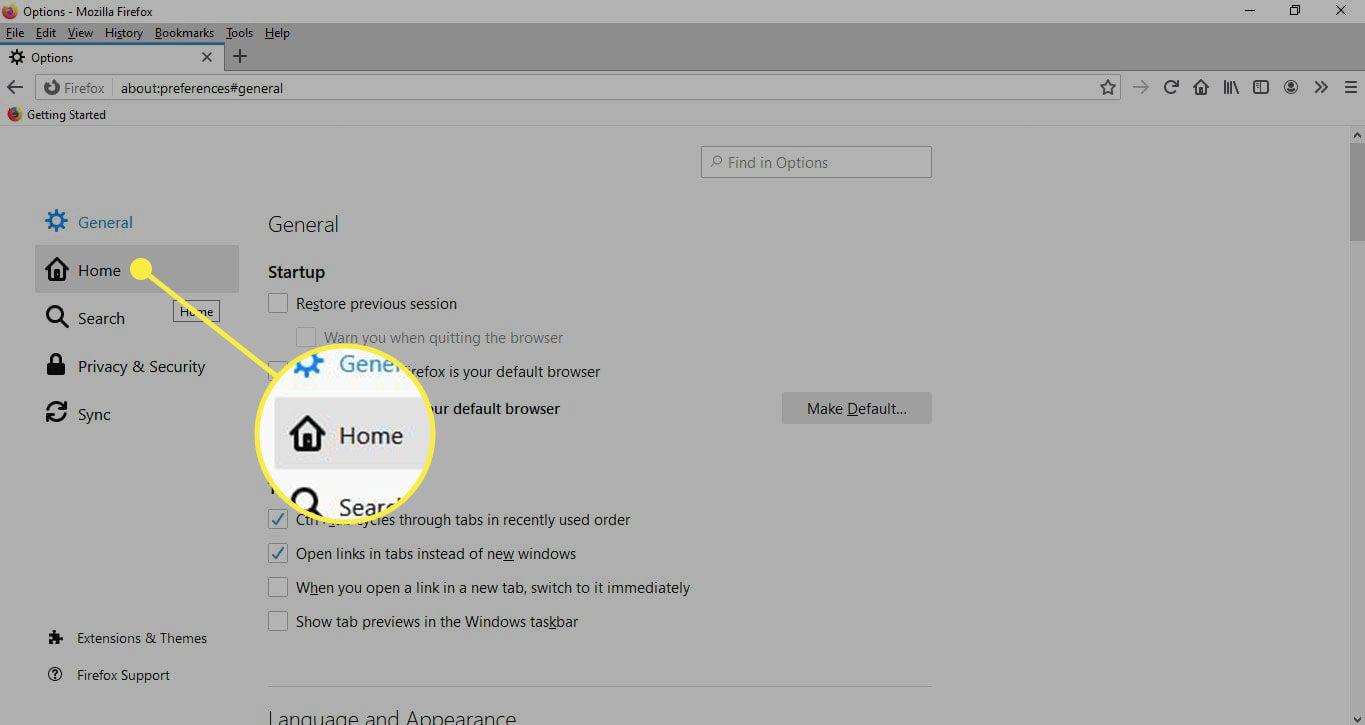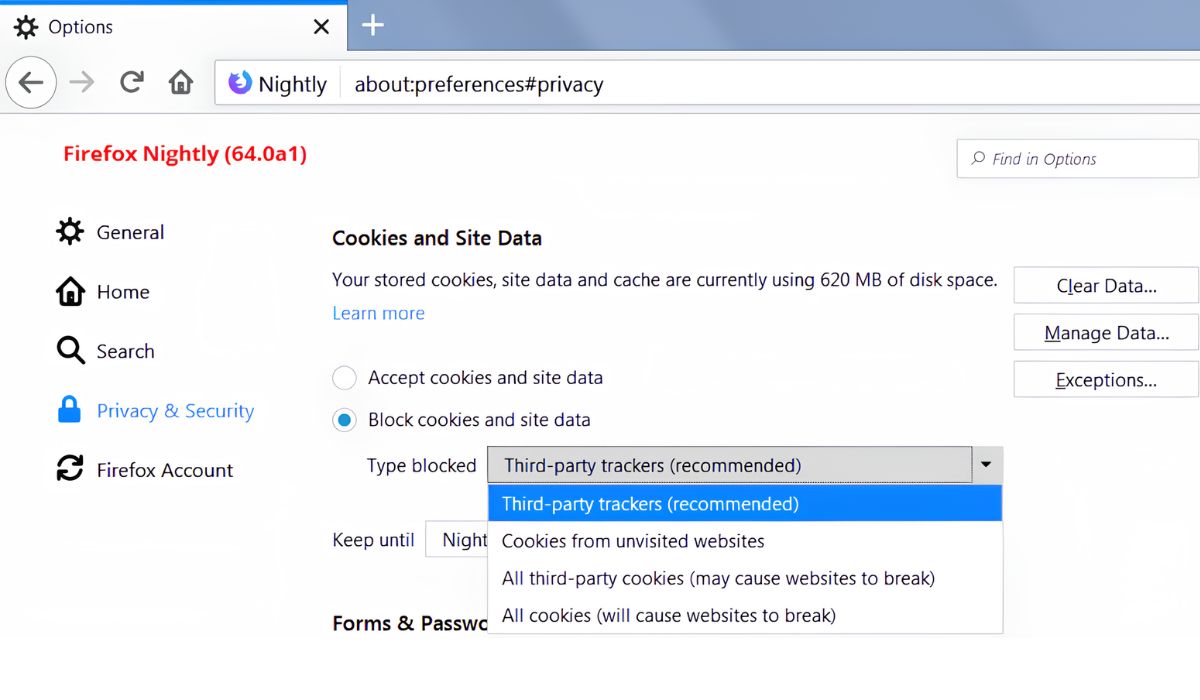Introduction
When you open your favorite web browser, Firefox, to embark on a digital journey through the vast landscape of the internet, you might not realize that behind the scenes, a complex symphony of processes is at play. Have you ever wondered why there are multiple Firefox processes running in the background? This seemingly enigmatic phenomenon is not a glitch or an unnecessary burden on your computer's resources. In fact, it is a deliberate and ingenious design feature that serves to enhance your browsing experience in more ways than one.
As you navigate through the virtual realm, each tab, extension, and plugin you engage with triggers a series of actions within Firefox. These actions, such as rendering web pages, executing scripts, and managing multimedia content, require computational resources. To ensure optimal performance and stability, Firefox employs a multi-process architecture, which means that it creates separate processes to handle different tasks. This approach is a departure from the traditional single-process model, where all tasks are managed within a single process.
In the following sections, we will delve deeper into the intricacies of Firefox's multi-process architecture, exploring the benefits and drawbacks of this approach. By gaining a comprehensive understanding of why there are multiple Firefox processes, you will be empowered to make the most of your browsing experience and harness the full potential of this innovative web browser.
Understanding Firefox Processes
Firefox's multi-process architecture, also known as Electrolysis or e10s, represents a fundamental shift in how web browsers handle tasks and manage resources. In the traditional single-process model, all tabs, extensions, and plugins operate within a single process. This means that if one tab or component encounters an issue, it can potentially impact the entire browser, leading to sluggish performance or even crashes.
To address these limitations, Firefox adopted a multi-process architecture, which involves creating separate processes for different tasks. Each tab, extension, and plugin operates within its own process, isolated from the others. This isolation ensures that if one component encounters a problem, it does not affect the overall stability and performance of the browser.
Furthermore, Firefox designates a separate process, known as the "content process," to handle the rendering and execution of web page content. This separation prevents web pages from directly accessing sensitive system resources, enhancing security and mitigating the impact of potential vulnerabilities.
Additionally, Firefox employs a dedicated process, the "browser process," to manage the user interface, address bar, and overall browser functionality. By isolating these critical components in a separate process, Firefox can maintain responsiveness and stability even when individual tabs or content processes encounter issues.
Moreover, Firefox's multi-process architecture extends to its handling of extensions and plugins. Each extension operates within its own process, allowing for independent execution and preventing a single malfunctioning extension from affecting the entire browser.
This approach to process management represents a significant advancement in web browser technology, as it enhances stability, security, and performance. By isolating tasks within separate processes, Firefox can deliver a smoother and more resilient browsing experience, empowering users to explore the web with confidence and efficiency.
In essence, understanding Firefox processes entails recognizing the innovative approach the browser takes to task management and resource allocation. By embracing a multi-process architecture, Firefox aims to elevate the browsing experience by mitigating the impact of potential issues and optimizing performance across various tasks and components.
Benefits of Multiple Firefox Processes
The implementation of multiple processes within Firefox yields a myriad of benefits that significantly enhance the browsing experience for users. By embracing a multi-process architecture, Firefox achieves the following advantages:
-
Enhanced Stability: With multiple processes, Firefox isolates individual tabs, extensions, and plugins, preventing issues in one component from impacting the entire browser. This isolation ensures that if a particular web page or extension encounters a problem, it does not lead to a browser-wide crash or slowdown. As a result, users can enjoy a more stable browsing experience, free from the disruptive effects of individual component failures.
-
Improved Performance: The multi-process architecture of Firefox contributes to enhanced performance by leveraging the capabilities of modern multi-core processors. By distributing tasks across multiple processes, Firefox can harness the full potential of the user's hardware, leading to smoother and more responsive browsing. This optimized resource utilization allows Firefox to deliver faster page loading times and improved overall performance, empowering users to navigate the web with efficiency and speed.
-
Enhanced Security: Firefox's multi-process architecture enhances security by isolating web page content within dedicated processes. This isolation prevents malicious web pages from directly accessing sensitive system resources, mitigating the impact of potential security vulnerabilities. Additionally, the separation of critical browser components into distinct processes enhances the browser's resilience against security threats, safeguarding users' data and privacy as they explore the internet.
-
Isolation of Resource-Intensive Tasks: By assigning separate processes to handle resource-intensive tasks such as multimedia content and complex web applications, Firefox can prevent these tasks from monopolizing system resources and impacting the overall browsing experience. This isolation ensures that demanding tasks do not hinder the responsiveness of other tabs and components, allowing users to engage with diverse content without sacrificing performance.
-
Efficient Handling of Extensions: With each extension operating within its own process, Firefox ensures that the malfunctioning of a single extension does not compromise the stability of the entire browser. This approach minimizes the potential impact of problematic extensions, allowing users to customize their browsing experience with confidence, knowing that individual extensions operate independently and do not pose a risk to the overall browser functionality.
In essence, the implementation of multiple processes within Firefox represents a pivotal advancement in web browser technology, offering users a more stable, secure, and efficient platform for exploring the internet. By reaping the benefits of a multi-process architecture, Firefox empowers users to embrace the full potential of the web, free from the constraints of traditional single-process models.
Drawbacks of Multiple Firefox Processes
While the multi-process architecture of Firefox brings forth a multitude of benefits, it is essential to acknowledge the potential drawbacks associated with this innovative approach. Understanding these limitations provides a comprehensive perspective on the intricacies of Firefox's process management. The drawbacks of multiple Firefox processes include:
-
Increased Memory Consumption: One of the notable drawbacks of Firefox's multi-process architecture is the potential for increased memory consumption. With each tab, extension, and plugin operating within its own process, the browser may consume a higher amount of memory compared to single-process models. This can be particularly evident when users engage with numerous tabs and resource-intensive web applications, leading to a more pronounced impact on system resources.
-
Resource Overhead: The allocation of separate processes for individual tasks introduces a degree of resource overhead. Managing and coordinating multiple processes incurs additional computational overhead, which can marginally impact the overall system performance. While modern hardware can mitigate this impact to a certain extent, the overhead associated with process management remains a consideration in the context of resource utilization.
-
Potential Compatibility Issues: The multi-process architecture of Firefox may introduce compatibility challenges with certain extensions and plugins. While Firefox endeavors to ensure seamless compatibility, some extensions developed for the traditional single-process model may encounter issues when operating within the multi-process environment. This can lead to functionality limitations and occasional conflicts, necessitating ongoing efforts to optimize extension compatibility.
-
Complex Debugging and Diagnostics: The isolation of tasks within separate processes can complicate the debugging and diagnostics process for developers and technical support personnel. Identifying and resolving issues related to specific processes requires a nuanced understanding of the multi-process architecture, adding complexity to the troubleshooting and optimization of browser performance.
-
Potential Impact on Battery Life: The increased resource utilization associated with multiple processes may have a potential impact on the battery life of mobile devices. While modern devices are designed to manage resource-intensive tasks efficiently, the sustained operation of multiple processes can contribute to higher power consumption, affecting the overall battery performance during extended browsing sessions.
Acknowledging these drawbacks underscores the nuanced nature of Firefox's multi-process architecture. While the benefits of enhanced stability, performance, and security are substantial, users and developers must navigate the potential trade-offs associated with increased memory consumption, resource overhead, compatibility challenges, debugging complexity, and potential impact on battery life. By recognizing these considerations, Firefox continues to refine its multi-process implementation, striving to optimize the balance between performance gains and resource efficiency.
Managing Multiple Firefox Processes
Managing multiple Firefox processes involves understanding how users can monitor, control, and optimize the behavior of these processes to enhance their browsing experience. While Firefox's multi-process architecture operates seamlessly in the background, users have the ability to manage and customize certain aspects of process behavior. Here are several key strategies for effectively managing multiple Firefox processes:
Monitoring Process Activity
Users can monitor the activity of Firefox processes using built-in browser tools and third-party extensions. Firefox provides a Task Manager that allows users to view the resource utilization of individual processes, including memory and CPU usage. By accessing the Task Manager, users can identify processes that may be consuming excessive resources, enabling them to take appropriate action to optimize performance.
Controlling Process Prioritization
Firefox allows users to prioritize processes based on their importance and resource requirements. By accessing advanced settings or utilizing browser extensions, users can allocate system resources more effectively, ensuring that critical processes receive priority while preventing resource-intensive tasks from impacting overall browsing performance. This level of control empowers users to tailor the behavior of Firefox processes to align with their specific usage patterns and hardware capabilities.
Optimizing Extension and Plugin Behavior
Users can optimize the behavior of extensions and plugins within Firefox processes to minimize potential conflicts and resource consumption. By reviewing and managing installed extensions, users can ensure that each extension operates efficiently within its designated process, contributing to a more stable and responsive browsing experience. Additionally, users can leverage browser settings to control the behavior of plugins, further refining the management of Firefox processes.
Leveraging Performance-Enhancing Tools
Firefox offers performance-enhancing tools and settings that enable users to fine-tune the behavior of multiple processes. Features such as content process limit and process hang detection empower users to customize the allocation of processes and detect unresponsive tabs, contributing to a smoother and more reliable browsing experience. By leveraging these tools, users can actively manage the performance and stability of Firefox processes to suit their individual preferences and system capabilities.
Implementing Resource-Saving Techniques
Users can implement resource-saving techniques to optimize the behavior of Firefox processes, particularly in scenarios where system resources are constrained. By adjusting browser settings, such as reducing the number of content processes or limiting the use of resource-intensive features, users can effectively manage process behavior to align with their hardware capabilities. These resource-saving techniques enable users to strike a balance between performance and resource efficiency, ensuring a tailored browsing experience.
In essence, managing multiple Firefox processes empowers users to actively monitor, control, and optimize the behavior of these processes, contributing to a more personalized and efficient browsing experience. By leveraging built-in browser tools, advanced settings, and performance-enhancing features, users can tailor the behavior of Firefox processes to align with their specific usage patterns and hardware capabilities, ultimately enhancing their overall browsing experience.
Conclusion
In conclusion, the presence of multiple processes within Firefox represents a pivotal evolution in web browser technology, offering a host of benefits that elevate the browsing experience for users. The deliberate adoption of a multi-process architecture, characterized by the isolation of tasks within separate processes, has ushered in a new era of stability, performance, and security in web browsing.
By embracing a multi-process architecture, Firefox has effectively mitigated the impact of individual component failures, delivering enhanced stability that empowers users to explore the web with confidence. The isolation of web page content within dedicated processes has not only bolstered security but also ensured that potential vulnerabilities do not compromise the overall browsing experience. Furthermore, the efficient handling of resource-intensive tasks and the isolation of extensions within separate processes have contributed to improved performance and a more resilient browsing environment.
While the multi-process architecture of Firefox introduces potential drawbacks such as increased memory consumption and resource overhead, the browser continues to refine its implementation, striving to optimize the balance between performance gains and resource efficiency. Additionally, users have the ability to actively manage and customize the behavior of Firefox processes, leveraging built-in tools and advanced settings to tailor the browsing experience to their specific preferences and hardware capabilities.
As users navigate the digital landscape with Firefox, the presence of multiple processes working harmoniously behind the scenes ensures a smoother, more secure, and more responsive browsing experience. By understanding the intricacies of Firefox's multi-process architecture and the associated benefits and considerations, users can harness the full potential of this innovative web browser, embracing the boundless opportunities of the internet with unparalleled stability and efficiency.
In essence, the presence of multiple Firefox processes is not a mere technicality; it is a testament to Firefox's commitment to redefining the browsing experience, empowering users to explore the web with unwavering confidence and seamless performance. As Firefox continues to evolve and refine its multi-process architecture, users can look forward to a future where the boundaries of web browsing are transcended, and the potential of the digital realm is fully realized.

























